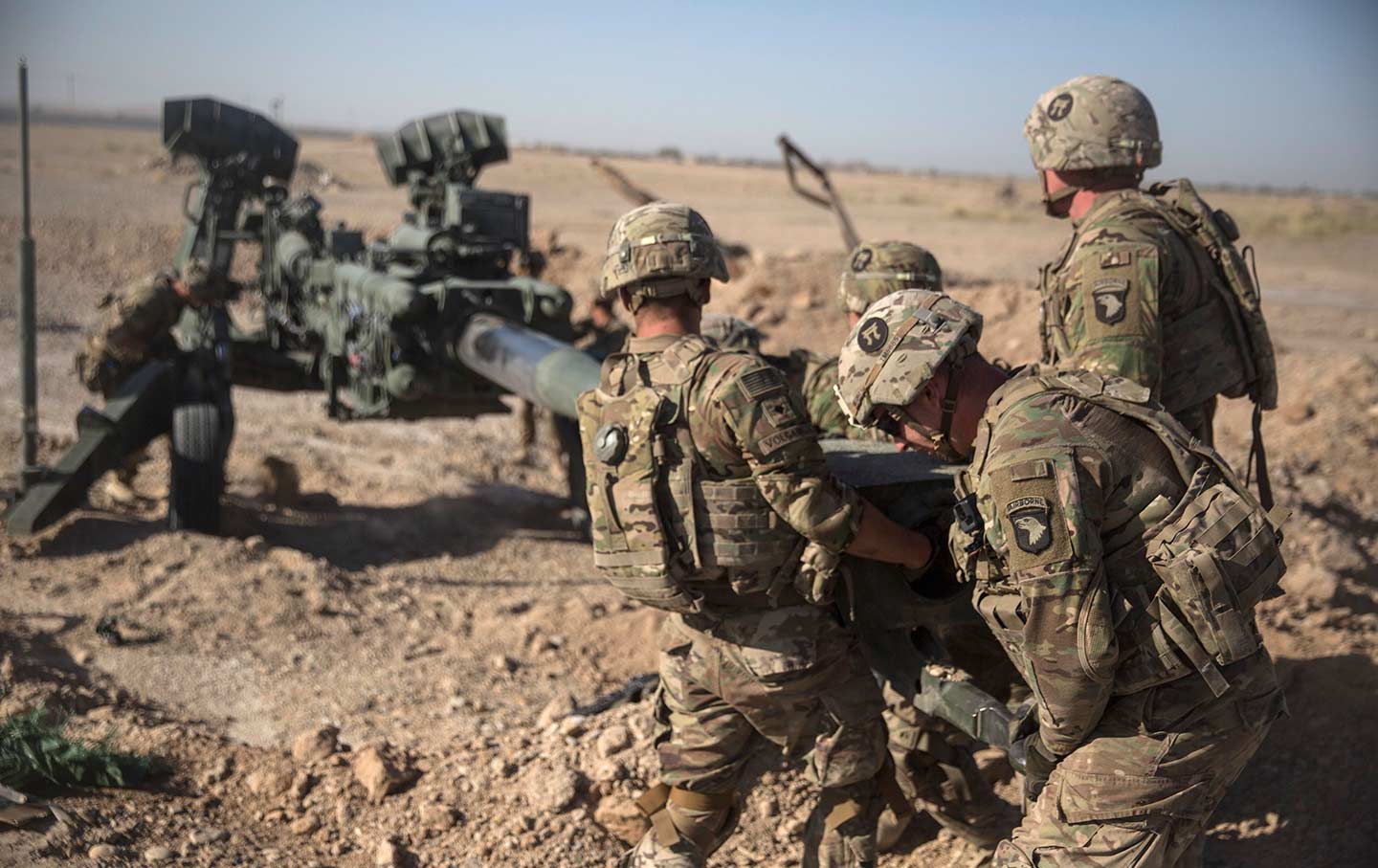

The Taliban continued to escalate its terrorist attacks, and the United States entered peace talks with the group in February 2019. "I will not say when we are going to attack, but attack we will." "America's enemies must never know our plans, or believe they can wait us out," he said. In August 2017, Trump delivered a speech to American troops vowing " we will fight to win" in Afghanistan. In his first few months of office, President Donald Trump authorized the Pentagon to make combat decisions in Afghanistan, and, on April 13, 2017, the United States dropped its most powerful non-nuclear bomb, called the " mother of all bombs," on a remote ISIS cave complex.

In 2015, the Taliban continued to increase its attacks, bombing the parliament building and airport in Kabul and carrying out multiple suicide bombings. soldiers remaining in Afghanistan to continue training local forces. NATO transitioned control to Afghan forces in June 2013, and Obama announced a new timeline for troop withdrawal in 2014, which included 9,800 U.S.

troops by summer 2012, and all troops by 2014.
#REAL WAR VIDEOS FROM AFGHANISTAN UPDATE#
President Barack Obama, Vice President Joe Biden, Secretary of State Hillary Clinton and members of the national security team receive an update on the mission against Osama bin Laden in the Situation Room of the White House May 1, 2011, Washington, D.C.įollowing bin Laden's death, a decade into the war and facing calls from both lawmakers and the public to end the war, Obama released a plan to withdraw 33,000 U.S. Navy SEALs located and killed bin Laden in Pakistan. In November 2010, NATO countries agreed to a transition of power to local Afghan security forces by the end of 2014, and, on May 2, 2011, following 10-year manhunt, U.S. American troops reached a peak of approximately 110,000 soldiers in Afghanistan in 2011. "This increase is necessary to stabilize a deteriorating situation in Afghanistan, which has not received the strategic attention, direction and resources it urgently requires," he stated. troops to Afghanistan by summer to join 36,000 American and 32,000 NATO forces already deployed there. In a written statement released February 17, 2009, newly elected President Barack Obama pledged to send an extra 17,000 U.S. The ISAF’s focus shifted to peacekeeping and reconstruction, but with the United States fighting a war in Iraq, the Taliban regrouped and attacks escalated. Secretary of Defense Donald Rumsfeld declared "major combat" operations had come to an end in Afghanistan.Ī new constitution was soon enacted and Afghanistan held its first democratic elections since the onset of the war on October 9, 2004, with Karzai, who went on to serve two five-year terms, winning the vote for president. military focus turned to Iraq in 2003, the same year U.S. While approximately 8,000 American troops remained in Afghanistan as part of the International Security Assistance Force (ISAF) overseen by NATO, the U.S. In June, Hamid Karzai, head of the Popalzai Durrani tribe, was chosen to lead the transitional government. Shift to Reconstructionĭuring a speech on April 17, 2002, Bush called for a Marshall Plan to aid in Afghanistan’s reconstruction, with Congress appropriating more than $38 billion for humanitarian efforts and to train Afghan security forces. On December 6, Kandahar fell, signaling the official end of Taliban rule in Afghanistan and causing al Qaeda, and bin Laden, to flee. Ground forces followed, and with the help of Northern Alliance forces, the United States quickly overtook Taliban strongholds, including the capital city of Kabul, by mid-November. and British forces launched Operation Enduring Freedom, an airstrike campaign against al Qaeda and Taliban targets including Kandahar, Kabul and Jalalabad that lasted five days. Bush demanded the Taliban deliver bin Laden and other al Qaeda leaders to the United States, or "share in their fate." They refused. In an address on September 20, 2001, President George W. It was believed the Taliban, which seized power in the country in 1996 following an occupation by the Soviet Union, was harboring bin Laden, a Saudi, in Afghanistan. Leading the plot that killed more than 2,700 people was Osama bin Laden, leader of the Islamic militant group al Qaeda. Investigators determined the 9/11 attacks-in which terrorists hijacked four commercial airplanes, crashing two into the World Trade Center towers in New York City, one at the Pentagon near Washington, D.C., and one in a Pennsylvania field-were orchestrated by terrorists working from Afghanistan, which was under the control of the Taliban, an extremist Islamic movement.


 0 kommentar(er)
0 kommentar(er)
